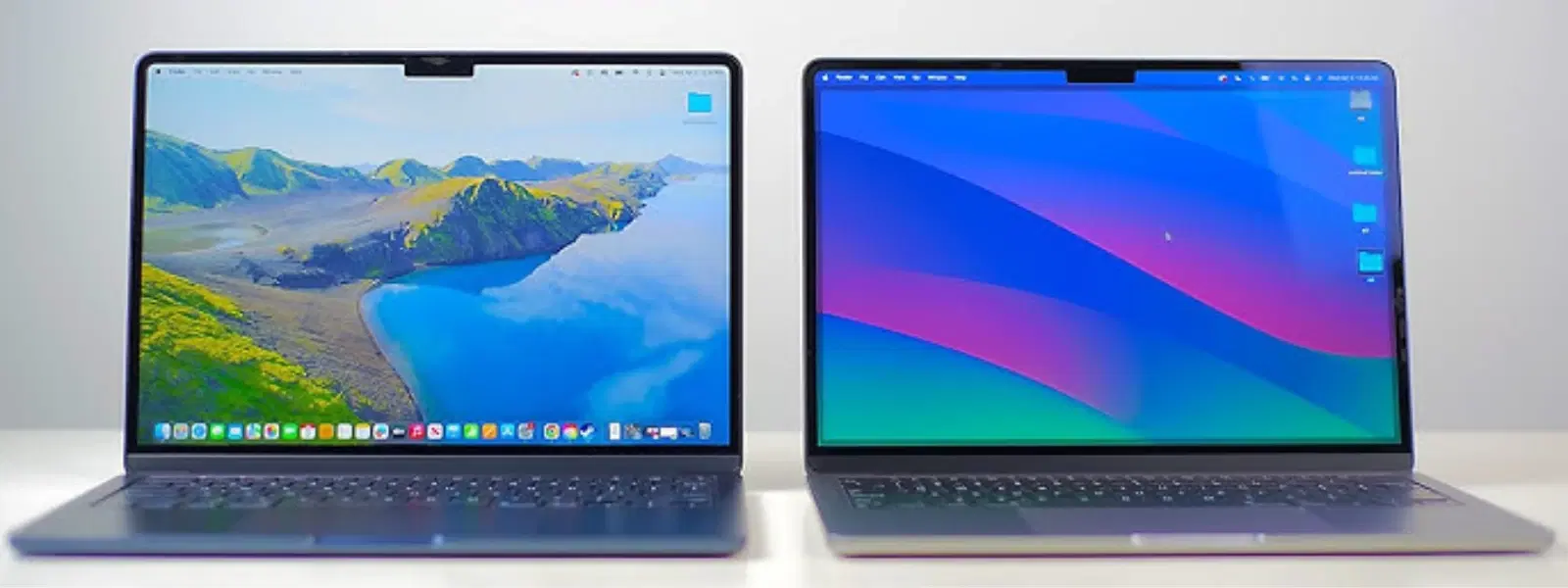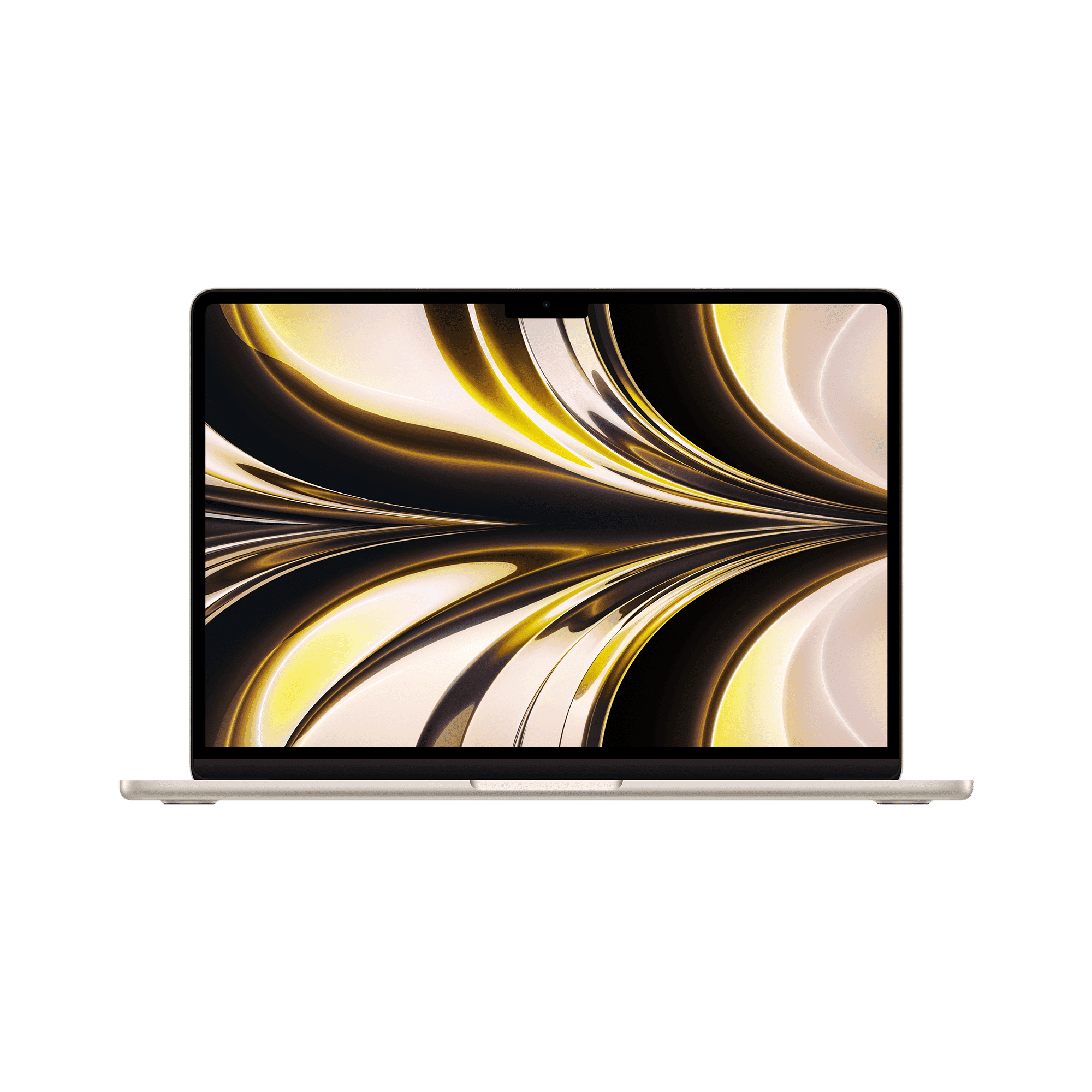
Consumer Electronics
•05 min read

Buy Apple MacBook Air 2023 (M2, 15 inch, 8GB, 256GB, macOS, Midnight) online at best prices from Croma. Check product details, reviews & more. Shop now!
Apple’s MacBook Air lineup has long been a favourite among students, young professionals, and creatives alike. With the arrival of the new M3 chip, the debate on whether to upgrade from the M2 or stick with the trusted model is heating up. This article offers a comprehensive macbook air m2 vs m3 comparison, exploring design, performance, battery life, pricing, and upgrade options, so you can make an informed decision that fits your needs and budget.
The MacBook Air M2 and M3 boast a sleek design with a focus on portability. In terms of weight and dimensions, both models are engineered for everyday use. The macbook air design comparison reveals that differences in weight are minimal, ensuring that portability remains a strong trait in both models. For those who value ease of handling during commutes or travel, both devices offer a nearly identical experience.
The M3 edition introduces subtle aesthetic updates that enhance its appeal. New colour options and slight refinements in material finish bring a modern look to the MacBook Air series while retaining the signature slim and lightweight profile adored by users. This differs from the M2, which continues with its classic appeal while delivering reliable performance.
An area where both models impress is the display quality. Detailed macbook air display quality assessments show that the M3 continues to build upon its predecessor's strong foundation with vibrant resolutions, impressive brightness levels, and refined technology for crisp visuals. Whether you are editing photos or streaming videos, both models offer a visual treat.
When comparing the macbook air m2 comparison with the new features of the M3, one finds interesting differences in their processors. The M2 chip is built with a 10-core GPU that delivers robust performance for everyday tasks. The M3, on the other hand, sports an 8-core GPU but benefits from a refined architecture that improves efficiency. This means that although the M3 uses fewer cores, its engineering allows for competitive performance especially in scenarios where energy efficiency is a priority. This macbook air processor differences analysis highlights that the M3 has been optimised for better power management and longevity.
Practical tests and m2 vs m3 speed test results indicate that the M3 stands up well in daily tasks and creative work alike. Benchmark tests suggest that its enhanced architecture provides a smooth experience, even when running demanding software. Users can comfortably run professional applications, graphic design tools, and other productivity software with either model. The subtle, behind-the-scenes differences in architecture ensure that performance is reliable and efficient.

Buy Apple MacBook Air 2024 (13.6 inch, M2, 16GB, 256GB, macOS Sequoia, Starlight) online at best prices from Croma. Check product details, reviews & more. Shop now!
For students and young professionals, both processors offer an excellent balance of performance and efficiency. Creatives and professionals who often perform heavy graphical tasks might appreciate the nuanced boost provided by the M3’s optimisations, while the M2 remains a sound option for those who prioritise cost-effectiveness and consistent performance. This clarity in m2 vs m3 performance ensures that each segment of users can choose a model that aligns with their lifestyle.
Battery longevity is a crucial factor when deciding between MacBook Air models. In this macbook air m2 vs m3 battery life review, both devices offer competitive usage durations. Whether you are browsing the web, watching videos, or tackling intensive tasks, each model delivers hours of productive use. The efficiency of the new M3 chip further refines battery performance, enabling longer usage periods without compromising performance.
The energy efficiency improvements in the M3 not only contribute to extended battery life but also improve heat management during prolonged usage. This creates a more comfortable user experience, particularly for those using their laptops in varied environments. The M3’s focus on reducing power consumption while maintaining high performance is a testament to Apple’s continuous commitment to innovation.
Pricing remains a pivotal factor for many prospective buyers. A close look at m2 vs m3 pricing reveals that differences in cost often reflect the subtle improvements in processor design and energy efficiency. The base configurations and upgrade options differ slightly between the two models, making it essential for buyers to weigh the benefits against their budget. With each device offering unique advantages, users can find a model that justifies their investment.
In a world where every rupee counts, the cost vs performance analysis shows that the M3’s enhancements offer a compelling case, particularly for those in need of future-proof technology. While the M2 remains a highly competitive option, the M3’s refined features and improved battery efficiency add significant value for tech enthusiasts and professionals who often rely on their devices for extended periods.
For those prioritising value, the choice hinges on individual needs. Budget-conscious buyers might lean towards the M2, which continues to impress with its reliability. Meanwhile, early adopters who cherish the latest technology might find the M3’s advancements in efficiency and performance well worth the extra investment. This clear macbook air upgrade options breakdown empowers informed decisions for various user profiles.

Buy Apple MacBook Air 2024 (15.3 inch, M3, 8GB, 256GB, macOS Sequoia, Starlight) online at best prices from Croma. Check product details, reviews & more. Shop now!
Deciding on an upgrade can be challenging. For users whose work demands a blend of efficiency and cutting-edge performance, migrating to the M3 can be a strategic move. However, if your current workflow is comfortably managed by the M2, then continuing with the familiar performance of this model might be the more pragmatic choice. Each option provides a robust experience, ensuring that you always have a reliable tool at hand.
While the focus here is on the MacBook Air, it is worth noting that Apple also offers other models that cater to specialised needs. Exploring alternative MacBook options may provide further insights into what fits best with your professional or academic requirements.
With continuous macOS updates and evolving technological landscapes, future-proofing remains an essential consideration. The M3’s enhanced technology, such as improved efficiency and the introduction of 3nm architecture, positions it as a long-term adopter for users who value staying ahead in today’s fast-paced tech environment. It is this forward-thinking approach that aligns with how Tata Neu supports smart and progressive shopping experiences.
Pro Tip: Understanding Apple’s Chip Naming Convention
Did you know? Apple’s M-series chips are built on ARM architecture, with each generation focusing on improved efficiency and performance. The M3 chip introduces 3nm technology, making it faster and more power-efficient than its predecessors.
The MacBook Air M2 weighs approximately 2.7 pounds, while the M3 maintains a similar profile, ensuring portability remains unchanged.
The M2 chip features a 10-core GPU, whereas the M3 chip employs an 8-core GPU with enhanced architecture for improved efficiency, even with fewer cores.
The M1 chip marked Apple's entry into ARM-based processing. The M2 built on that foundation with improved performance and efficiency. The M3 takes it further with 3nm technology, offering faster speeds and better power management.
In summary, both the MacBook Air M2 and M3 offer exceptional performance tailored to various needs. While the M3 provides cutting-edge technology with efficiency improvements and a future-proof design, the M2 continues to be a dependable choice for those seeking value and consistent performance. For customers who appreciate rewards like NeuCoins on Tata Neu, every smart transaction not only meets your tech needs but also enhances your overall shopping experience.